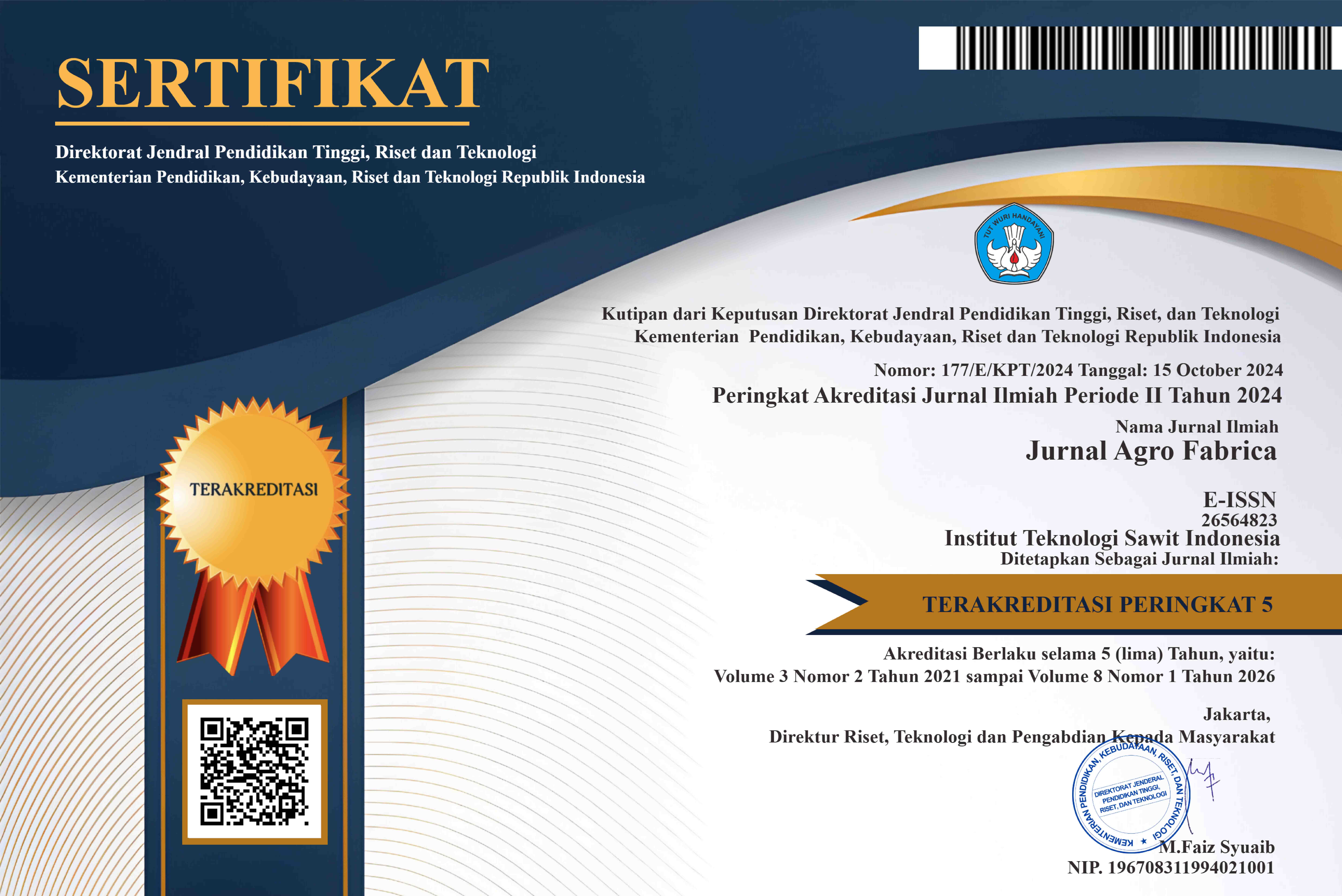KARAKTERISASI KOMPOSIT POLIURETAN DENGAN PENGISI (FILLER) MIKRO KARBON AKTIF DARI CANGKANG KELAPA: Actived Carbon
DOI:
https://doi.org/10.47199/jaf.v2i1.130Keywords:
: Actived Carbon, Polyurethane Composite, Fungtion Group, Mechanics of Polyurethane CompositeAbstract
Polyurethane is a type of polymer made by reacting polyol (OH) groups with isocyanate (NCO) groups. The
purpose of this study was to determine the mechanical properties of a mixture of polyol and toluene sources
as well as by adding the composition of activated carbon of palm shell as a filler to determine the best results.
The materials used in making composites are PPG (Polypropylene Glycol), TDI (Toluent DiIsocyanate) and
Palm Oil Shell Activated Carbon. Palm shells are carbonated at 600 ◦C, then made into powder using a ball
mill and then sieved with 110 mesh particle sieve and activated using 10% H2SO4. Furthermore
Polyurethanes are made by mixing, PPG (Polypropylene Glycol), TDI (Toluent in Isocyanate) with a ratio of
60%: 40% and then added the activated carbon of palm oil shell as a filler with polyurethane: 95% active
carbon (P1), 90 %: 10% (P2), 80%; 20% (P3), and 75%: 25% (P4), then the functional group (FT-IR) and
mechanical properties testing consisted of tensile strength and elasticity values. The results of the
characterization of amine (NH), methyl groups (C-H3), Acetyl groups (CN), carbonyl groups (C = O),
isocyanate groups (N = C = O), and Aromatic Rings (C = C) . This can be concluded after the addition of
activated carbon palm shell does not cause chemical reactions in the functional group. While the results of the
characterization of the tensile strength of P0 to P1 with a value of 0.1966 MPa to 0.0317 MPa, then increased
in the composition of 90 P2, P3, and P4 with values of 0.0985 MPa, 0.2318 MPa, 0.2981MPa, and finally
occurred decrease again in the composition of P5. While the highest elasticity value on composites with a
ratio of P4 is 0.05196 MPa, while the lowest elasticity value on the composition of P5 with a value of 0.0475
MPa.
Downloads
References
Aomar,Omar Jbara, Ahmed Tara, Mickael Gilliot, Fouad Malek, El Miloud, Maafi,Lan tighzert, “Effects of Cellulose Fiber Content on Physical Properties of Polyurethane Based Composites,” Journal of Composites Structures, 2015 : hal. 1-33
Aritonang, Barita., Basuki Wirjosentono dan Thamrin Eddiyanto. 2016 . Pemanfaatan Limbah Tandan Kosong Kelapa Sawit Sebagai Bahan Pengisi Pembuatan Busa Poliuretan . Universitas Sari Mutiara Indonesia.Medan
Cinelli Syarinal Anggi ., Fachry Wirathama dan Halimatuddaliana . 2013 . Pengaruh Ukuran Partikel dan Komposisi Terhadap Sifat Kekuatan Bentur Komposit Epoksi Berpengisi Serat Daun Nenas . Universitas Sumatera Utara . Medan.
Fauzi, Y. Widyastuti, Y. E., dan Satyawibawa, I. 2002. “Pemanfaatan Hasil danLimbah Analisis Usaha dan Pemasaran Kelapa Sawit”. Seri Agribisnis.Penebar Swadaya.Jakarta.
Hartanto, S dan Ratnawati. 2010. Pembuatan Karbon Aktif dari Tempurung Kelapa Sawit dengan Metode Aktivasi Kimia. Jurnal Sains.
Komariyah,Siti ., Moh Farid dan Rasyida,Amliya . 2016. Karakteristik Sifat Fisik dan Mekanik Komposit Polyurethane / Serbuk Bambu sebagai Aplikasi Panel Pintu Mobil.
Nuyah . 2012. Penggunaan Arang Cangkang Kelapa Sawit Sebagai Bahan Pengisi Dalam Pembuatan Kompon Selang Karet . Balai Riset Standarisasi Industri Palembang.
Stevens, M. P. 2001. Kimia Polimer. Diterjemahkan oleh Iis Sopyan. Pradya Paramita. Jakarta.Hlm. 33-35.
Tipeng Wang, Lianhui Zhang, Dong Li, Jun Yin Sha Wu, Zhihuai Mao, ”Mechanical Properties of polyurethane Foams Prepared From Liquefied Corn Stover With PAPI,” Journal of Bioresource Technology, 99 (2008), Hal. 2265-2268.
Yong shang Lu, Lan Tinghzert, Patrice Dole, Damien Erre, ”Preparation and Properties of Starch Thermoplastic Modified With Waterborne Polyurethane From Renewable Resources,” Journal of Polymer, 46 (2005), Hal. 9863-9870.
Downloads
Published
How to Cite
Issue
Section
License
Copyright (c) 2023 Jurnal Agro Fabrica

This work is licensed under a Creative Commons Attribution 4.0 International License.




















